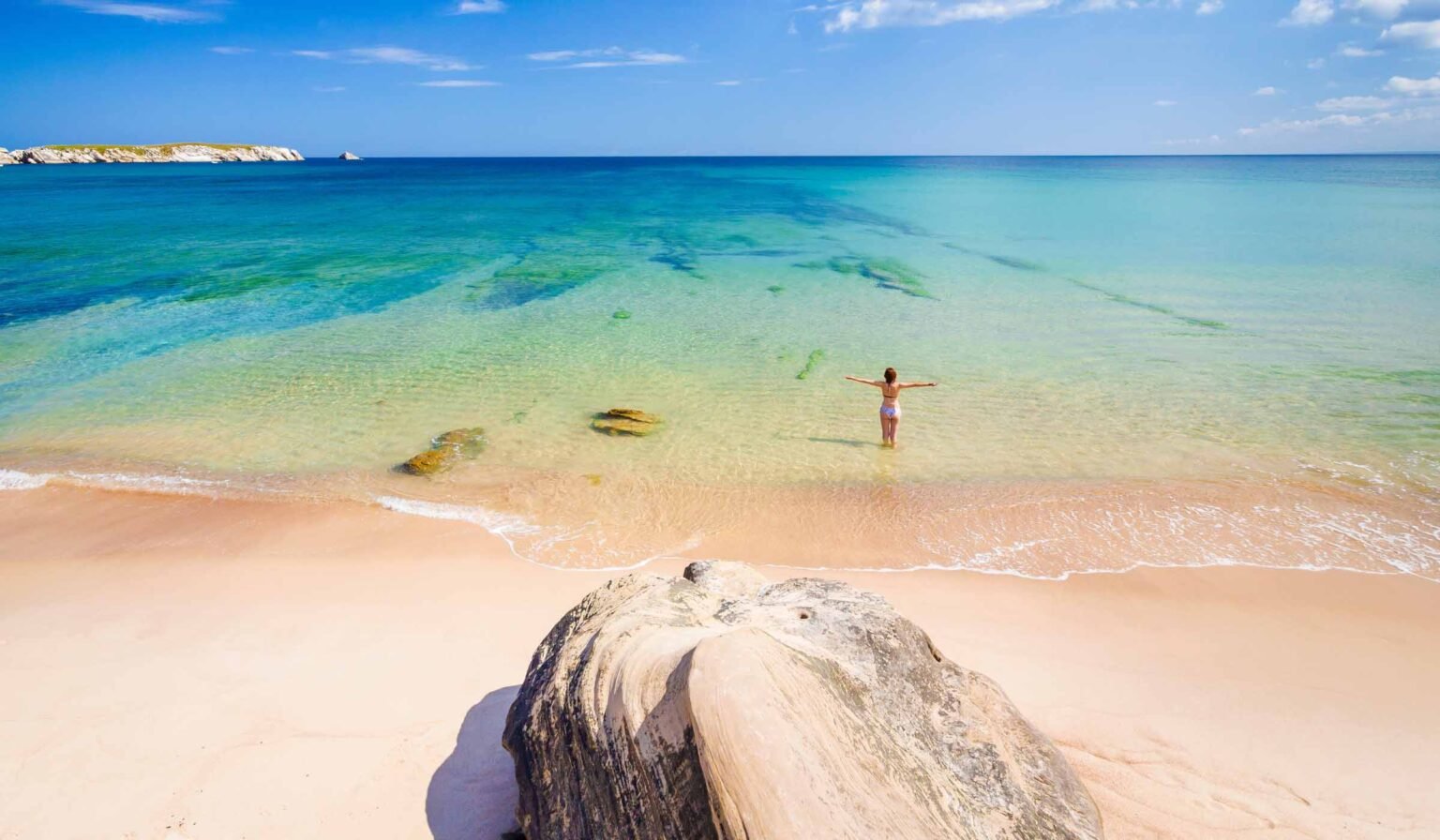Portugal’s diverse landscapes and temperate climate make it a year-round destination for travelers seeking a taste of European charm. Each season offers unique experiences, whether it’s the lively Santos Populares festivals in June, sun-soaked beach days in July, or the grape harvests in September.
However, winters can be cooler and very humid, particularly in the northern regions, while summers have become increasingly hot in recent years. Some destinations truly shine at specific times of the year, such as the Douro Valley’s lush greenery in spring or the Azores’ mild temperatures and vibrant flora during fall. So, it pays to plan your trip accordingly.
We’ve done the heavy lifting for you by creating a month-by-month breakdown of Portugal’s weather, events, and highlights, ensuring you make the most of your visit to this enchanting land.
The Best Time to Visit Portugal: April, May, September, or October
Spring and fall are like the yin and yang of weather and culture in Portugal. They bring vibrant colors to the countryside, with blossoming flowers in April and May and the start of beautiful fall foliage in October.
While summer in Portugal is a great time to cool down in a coastal town, droves of tourists and locals flock to the beach towns of Nazaré and Algarve for some fun in the sun. These spots can get crowded and expensive, especially in July and August when rates go sky-high.
Moreover, July and August have been ridiculously and nearly unbearably hot the past few summers, making it a miserable time to be out and about walking around the charming streets of Portugal.
The winter months, like much of the rest of Europe, are colder, drab, and often rainy. Our suggestion is to visit after Easter until the end of May. The best time to visit in the fall is between mid-September to the end of October. During these dates, you can almost guarantee sunshine, decent weather, and fewer crowds.
What’s the Best Month to Visit Portugal?
As mentioned, Portugal is blessed with a fairly mild climate year-round, meaning you could visit any time of the year and enjoy the sunshine and decent weather (depending on where you go, as North Portugal does get pretty cold).
But when is the best time to travel to Portugal? What weather conditions should you expect? And what activities await you during each season? Here is our breakdown of the best time to visit Portugal month by month, including our top recommendation for the best destination for your trip.
January
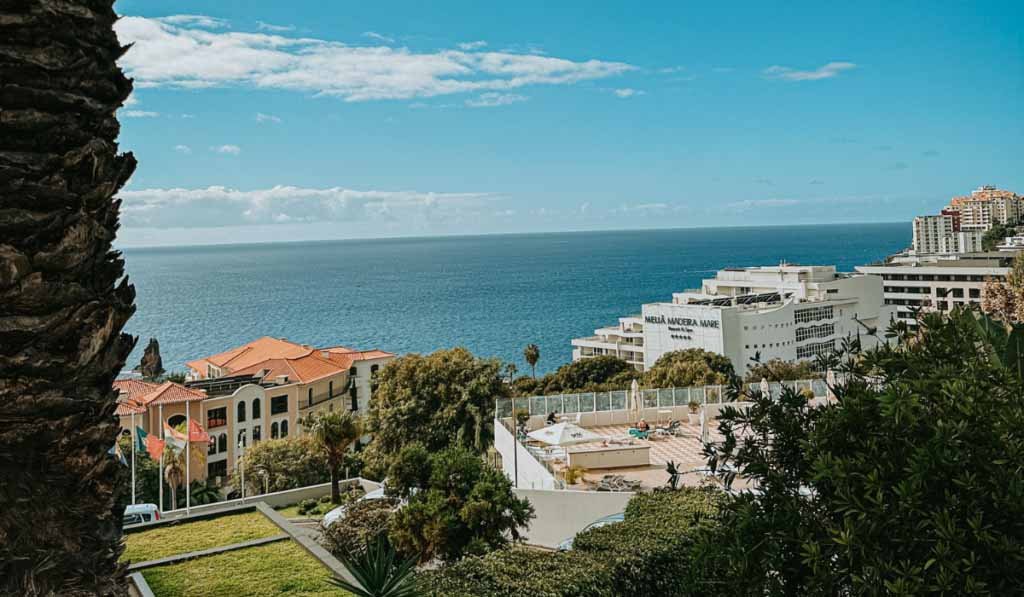
January is an ideal time to get away for those seeking an escape from the hustle and bustle of life. With Dia de Reis (Three Kings’ Day) on January 6th marking the end of Christmas festivities, it’s the perfect season for a refreshing break without lots of tourists or high prices.
Keep in mind that temperatures tend to be somewhat cold throughout most of the country, though, and there is a noticeable lack of greenery in what are typically lush green spaces.
However, if you’re looking for a cheap beach getaway, January is a great time to visit Madeira. Hike through the stunning levadas, treat yourself to spectacular vistas from Pico do Arieiro and Cabo Girão, enjoy a wine tour in Funchal, and explore the city’s historic Old Town.
Average High Temperature in Algarve in January: 61°F / 16°C
Average High Temperature in Lisbon in January: 59°F / 15°C
Average High Temperature in Porto in January: 57°F / 14°C
February

February is the perfect time to step into a carnival atmosphere and experience it like a local.
While most of the country is cold, you can take advantage of that weather and head to Torres, Portugal’s unique ski resort. And if you’re looking for some sun, head south down the coast to enjoy pleasant temperatures and vibrant festivals and events.
Ultimately, our top tip for visiting Portugal in February is to plan a trip to Nazaré. The Big Waves season occurs between October and March, and dead in the winter is often a great time to witness overwhelmingly huge waves in this seaside town.
If you’re feeling brave, take in the views from atop Sítio and admire the 18th-century fortresses scattered across the cliffs. You can also take a tour of the colorful 19th-century homes or try local dishes like sweet potatoes with cod fish at one of the town’s renowned restaurants.
Average High Temperature in Algarve in February: 64°F / 18°C
Average High Temperature in Lisbon in February: 61°F / 16°C
Average High Temperature in Porto in February: 59°F / 15°C
March
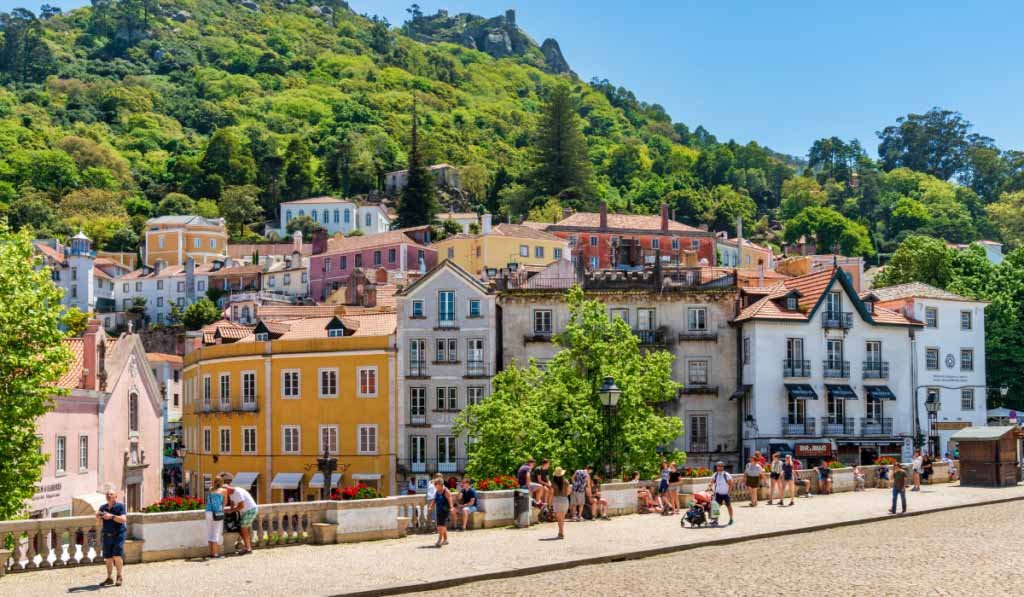
Are you looking for the perfect mix of foggy fairytale mornings and warm beach days in the sun during your trip to Portugal? Explore Portugal in March! Rainy days in the north and chilly air in the interior, coupled with the sun shining down on the south, make for an enchanting atmosphere.
However, one of the best places to visit in March is Lisbon. While there might be a few rainy days, the weather gets a bit warmer in March, making it easy to head outdoors to explore Alfama and Bairro Alto.
While you’re there, take a quick train to the coastal town of Cascais, about 20 miles west of Lisbon, where you’ll find amazing beaches, picturesque architecture, museums, and local markets. While it’s a popular summer destination, March is a great time to enjoy the sleepy town solo.
You can also take a day trip to the famous town of Sintra with its mystic mountains, fairytale castles and palaces, and lush green forests.
Average High Temperature in Algarve in March: 70°F / 21°C
Average High Temperature in Lisbon in March: 65°F / 18°C
Average High Temperature in Porto in March: 62°F / 16°C
April
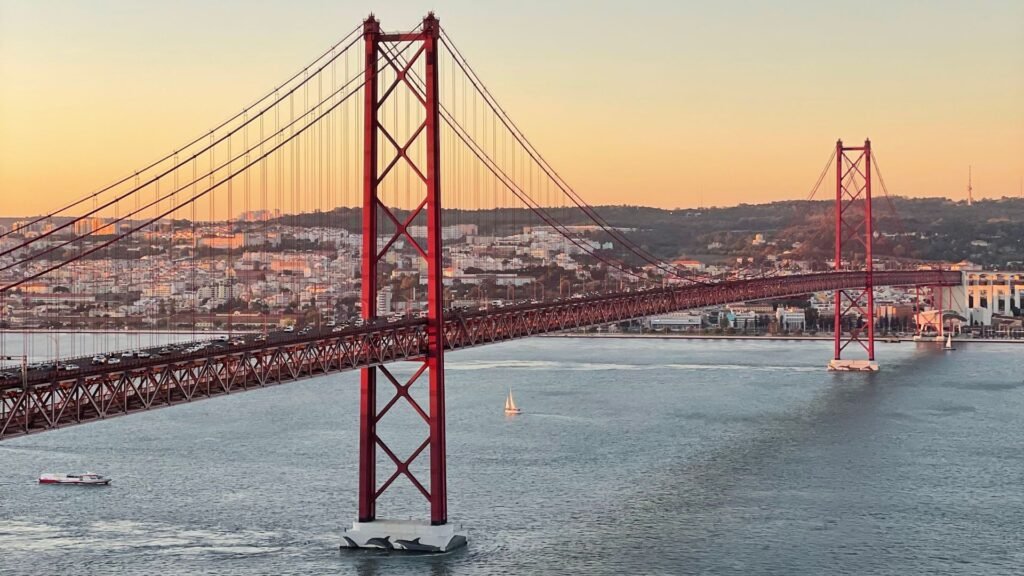
In April, springtime blooms abound! This season offers plenty, from warmer temperatures and sunshine to a medley of wildflowers across the south and colorful Easter parades.
By April, most of the trees and flowers are in bloom in the bottom half of the country, adding a vibrant pop of color to the already colorful streets. If you find yourself in certain towns on April 25th, take advantage of the celebratory Liberation Day parades and immerse yourself in the festivities.
However, try to avoid visiting Portugal during Semana Santa, which is Holy Week that occurs right before Easter. It usually falls sometime around the end of March or the beginning of April and is celebrated more here than in places like the United States.
While this can be a unique experience, businesses often close on Holy Thursday, Good Friday, and definitely Easter Sunday.
Average High Temperature in Algarve in April: 73°F / 23°C
Average High Temperature in Lisbon in April: 68°F / 20°C
Average High Temperature in Porto in April: 65°F / 18°C
May

In May, it’s time to start planning outdoor getaways. Lace up your walking shoes and pack for the Vía Algarviana or Rota Vicentina trails and prepare to live an unforgettable experience out in the Portuguese wilderness.
We suggest spending a lot of time up north during May, especially if you’re into hiking. This month is one of the best times to hike Peneda Geres National Park, as the flowers will be in full bloom. Or, opt for a tour through the striking Douro Valley and its many quintas (we definitely suggest a river cruise at sunset).
Average High Temperature in Algarve in May: 77°F / 25°C
Average High Temperature in Lisbon in May: 72°F / 22°C
Average High Temperature in Porto in May: 68°F / 20°C
June
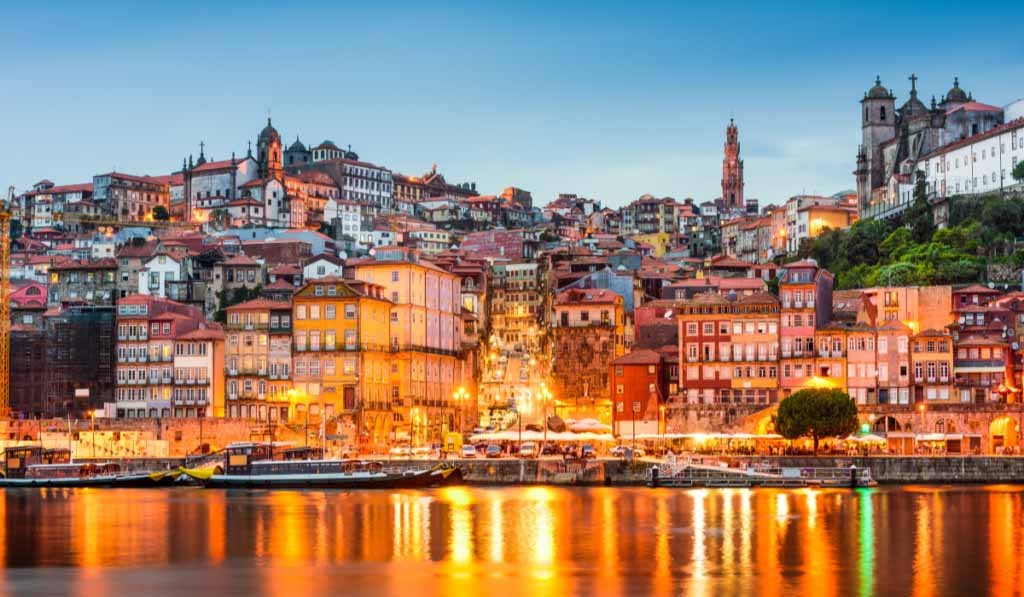
June is a perfect time to visit Portugal, with warm weather, blossoming tree-lined streets, and lively local festivals. The city of Porto is a must-visit destination in June, with its riverside views, stunning architecture, and delicious food.
Explore the neighborhoods of Ribeira, Foz do Douro, and Matosinhos, visit local wine cellars and try a few glasses of Port wine. Additionally, you can attend the Festas de São João, a colorful and fun-filled street festival in Porto that celebrates John the Baptist.
As you’ll see below, the average high temperature in Porto in June is a mild 73°F, making it a perfect place to escape the summer heat of other places around Europe and North America.
Expect to have to wear a light jacket at night, though, depending on the year. At night, it can get down to about 58°F to 60°F in Porto, even during the summer.
Average High Temperature in Algarve in June: 82°F / 28°C
Average High Temperature in Lisbon in June: 78°F / 25°C
Average High Temperature in Porto in June: 73°F / 23°C
July
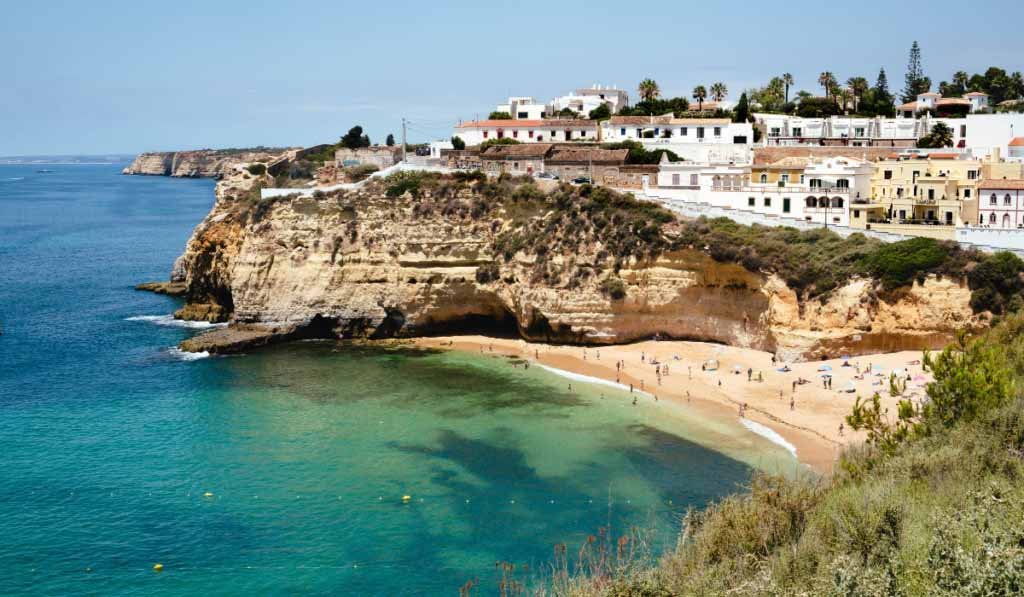
Things start to heat up quite a bit in July in Portugal. However, compared to other parts of Southern Europe, the temperatures aren’t that bad. As you can see below, there’s quite a big difference between the daily average high temperatures in South Portugal versus North Portugal. So where should you go when visiting Portugal in July?
While the weather might be warm, July is the perfect time to visit the seaside town of Faro, where the streets come alive for the Nossa Senhora do Carmo festival. This vibrant and festive event celebrates Portuguese culture with colorful parades, street performances, and authentic Portuguese cuisine.
You can enjoy the lively atmosphere of this event while exploring the stunning architecture of the historic district of Faro and lounging on the nearby beaches. Faro is also home to the Ria Formosa Natural Park, where you can take a boat tour and admire the unique wildlife in the area.
Average High Temperature in Algarve in July: 91°F / 33°C
Average High Temperature in Lisbon in July: 82°F / 28°C
Average High Temperature in Porto in July: 77°F / 25°C
August

As long as you’re okay with a few other tourists around (which is honestly quite unavoidable anywhere in Europe in August), August is an ideal time to visit anywhere in Portugal, as the weather is typically sunny and warm regardless of where you go.
Start your trip in Lisbon by wandering through its winding streets, admiring the beautiful architecture, and enjoying the vibrant atmosphere. Take a day trip to nearby Sintra for a taste of history, with its fairytale-like castles, stunning views, and cobblestone pathways. Visit the bustling beach towns of Cascais or Estoril or hit the surf at Caparica or Nazaré.
Head south to the Algarve region and explore its dramatic coastline, quaint fishing villages, and stunning beaches like Praia da Rocha or Albufeira. If you’re feeling adventurous, take a boat ride out to explore Europe’s largest sea cave — Benagil Caves.
Average High Temperature in Algarve in August: 90°F / 32°C
Average High Temperature in Lisbon in August: 83°F / 28°C
Average High Temperature in Porto in August: 77°F / 25°C
September
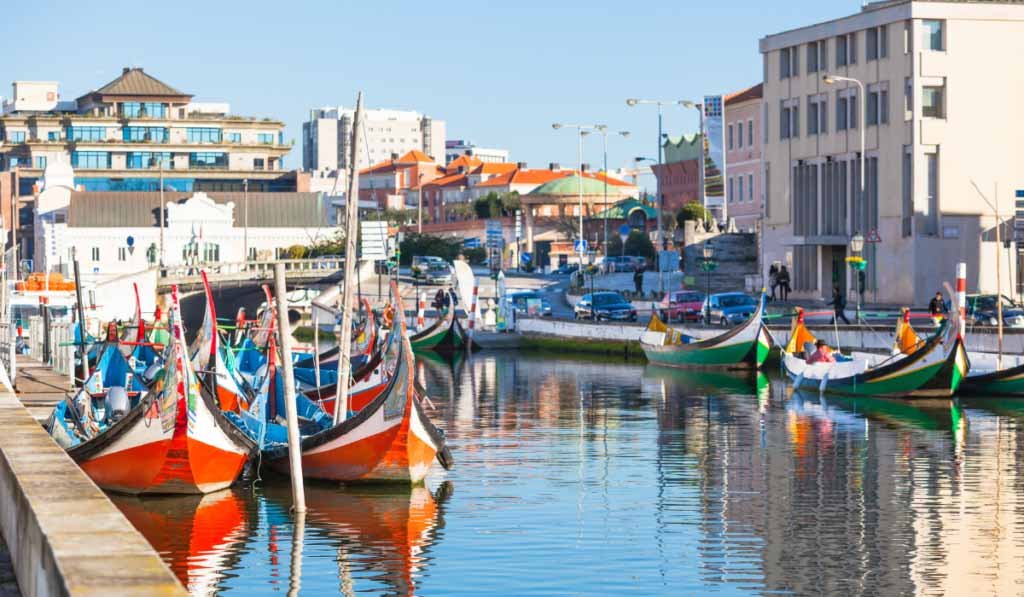
September brings a refreshing temperature drop, marking the beginning of the end of the peak tourist season. The last weeks of the month are a good time to get away; the beaches are still nice, and accommodation costs drop as the crowds dwindle.
As the crowds begin to dwindle, we suggest taking time to explore smaller towns in the interior of Portugal. Begin with the Aveiro — the Venice of Portugal. Stroll along its canals, admire the colorful boats bobbing in the water, and explore the little marketplaces.
Then head up north to Braga, known for its stunning churches and religious monuments. Explore the narrow cobblestone alleyways of the historical center, visit the iconic Braga Cathedral, or soak up stunning views from Bom Jesus do Monte. Visit nearby Guimarães to explore its majestic castle and medieval streets.
Then head to Coimbra, home to historic universities and grand monuments. Enjoy a stroll around the main square or tour the University of Coimbra’s grand library. Explore the ancient Celas Monastery, see the Moorish influence at Convento de Santa Clara-a-Velha, and admire relics from Roman times at Conímbriga ruins.
Average High Temperature in Algarve in September: 84°F / 29°C
Average High Temperature in Lisbon in September: 80°F / 27°C
Average High Temperature in Porto in September: 75°F / 24°C
October

If you missed this in the spring, October is a special time to visit the Douro vineyards, where you can witness the harvest and treading of the grapes (it usually happens around September or October). It’s also an exciting season for bird watchers, as many species pass through on their annual fall migration.
There are plenty of charming towns and areas to explore in this region, each with its unique personality and charm. For example, Pinhão is a quaint riverside village famous for its terraced vineyards and historic railway station. You’ll find plenty of port wine cellars to explore, and for a spectacular view, take a boat ride along the river.
We also suggest visiting the Côa Valley while you’re here during October. This UNESCO World Heritage site located in the east of the Douro Valley is known for its prehistoric rock art, rolling hills, and wine estates.
The weather during October in this region of Portugal is mild, with temperatures ranging from 10°C (50°F) to 23°C (73°F), providing an ideal climate for outdoor activities such as hiking and cycling. Just remember to pack a light jacket for the cooler evenings.
Average High Temperature in Algarve in October: 77°F / 25°C
Average High Temperature in Lisbon in October: 73°F / 23°C
Average High Temperature in Porto in October: 69°F / 20°C
November
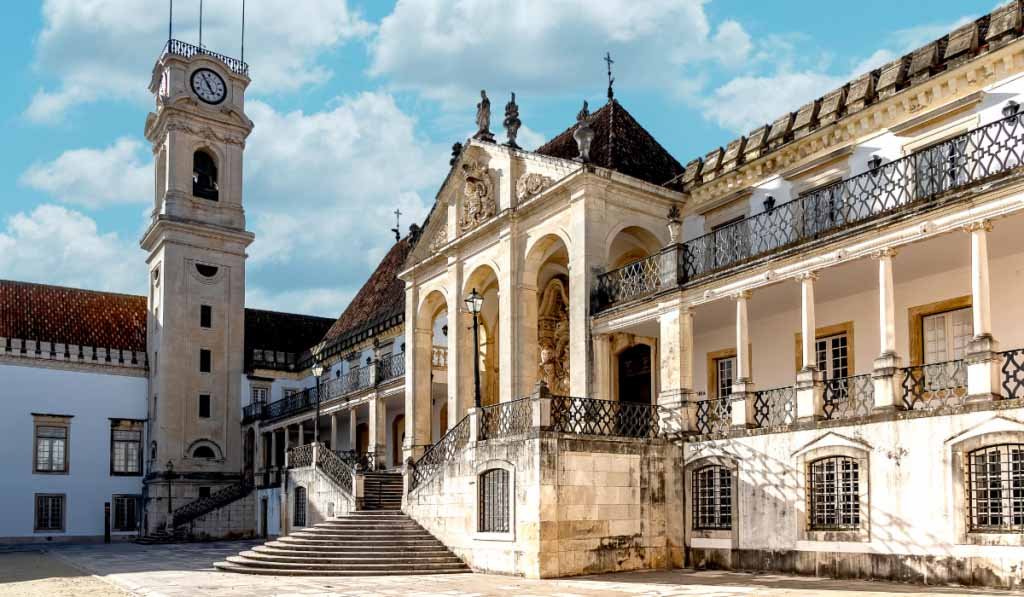
Bundle up because the temperatures are dropping, and rain is headed north! Travel along the coast for beautiful views with a light jacket on hand for windy days and chilly nights.
Visiting Portugal in November will allow you to score some amazing deals on accommodations. But where should you go? Try exploring Northern Portugal, where the leaves have likely already changed, and the air is crisp.
Coimbra is a charming city located in central Portugal and boasts stunning architecture, historic sites, and delicious local cuisine. During your visit to Coimbra in November, expect the weather to be slightly cooler, with temperatures ranging from 9°C to 16°C.
Be sure to visit the University of Coimbra, one of the oldest universities in Europe (with some serious Harry Potter vibes), and explore the Biblioteca Joanina library, a baroque masterpiece. If you’re a foodie, don’t leave without tasting bacalhau com natas or chanfana.
Average High Temperature in Algarve in November: 68°F / 20°C
Average High Temperature in Lisbon in November: 64°F / 18°C
Average High Temperature in Porto in November: 62°F /16°C
December

The best part about visiting Portugal in December is that it rarely snows here. So while you can enjoy festive Christmas markets, mulled wine, and cooler weather, it’s never going to be unbearably cold like in other places in Europe. On the south side of the country, pleasant days linger long into the night; while up north, cold rains and chilly nights characterize this time of year.
Lisbon goes all out with its Christmas decorations (just google what the Armazéns do Chiado and surrounding area look like at Christmas). However, if you’re looking for something more unique, we suggest traveling to Évora. Located in the Alentejo region, we love it for its rich history and picturesque architecture that’s sure to get you in the holiday spirit.
Although the weather can be cooler, with temperatures ranging from 5°C to 14°C, there are a lot of indoor activities to do in Évora. Be sure to visit the Chapel of Bones, a unique attraction made entirely of human bones, and explore the Évora Cathedral, a beautiful Gothic monument.
Average High Temperature in Algarve in December: 63°F / 217°C
Average High Temperature in Lisbon in December: 59°F / 15°C
Average High Temperature in Porto in December: 57°F /14°C
Enjoy Your Visit to Portugal
Portugal is an all-year-round destination with something unique to offer in every season. Plan your visit to Portugal based on your interests and choose the season with the most memorable experience.
Regardless of when you visit, we guarantee you’ll enjoy a trip full of Portugal’s rich history, culture, and natural beauty.

